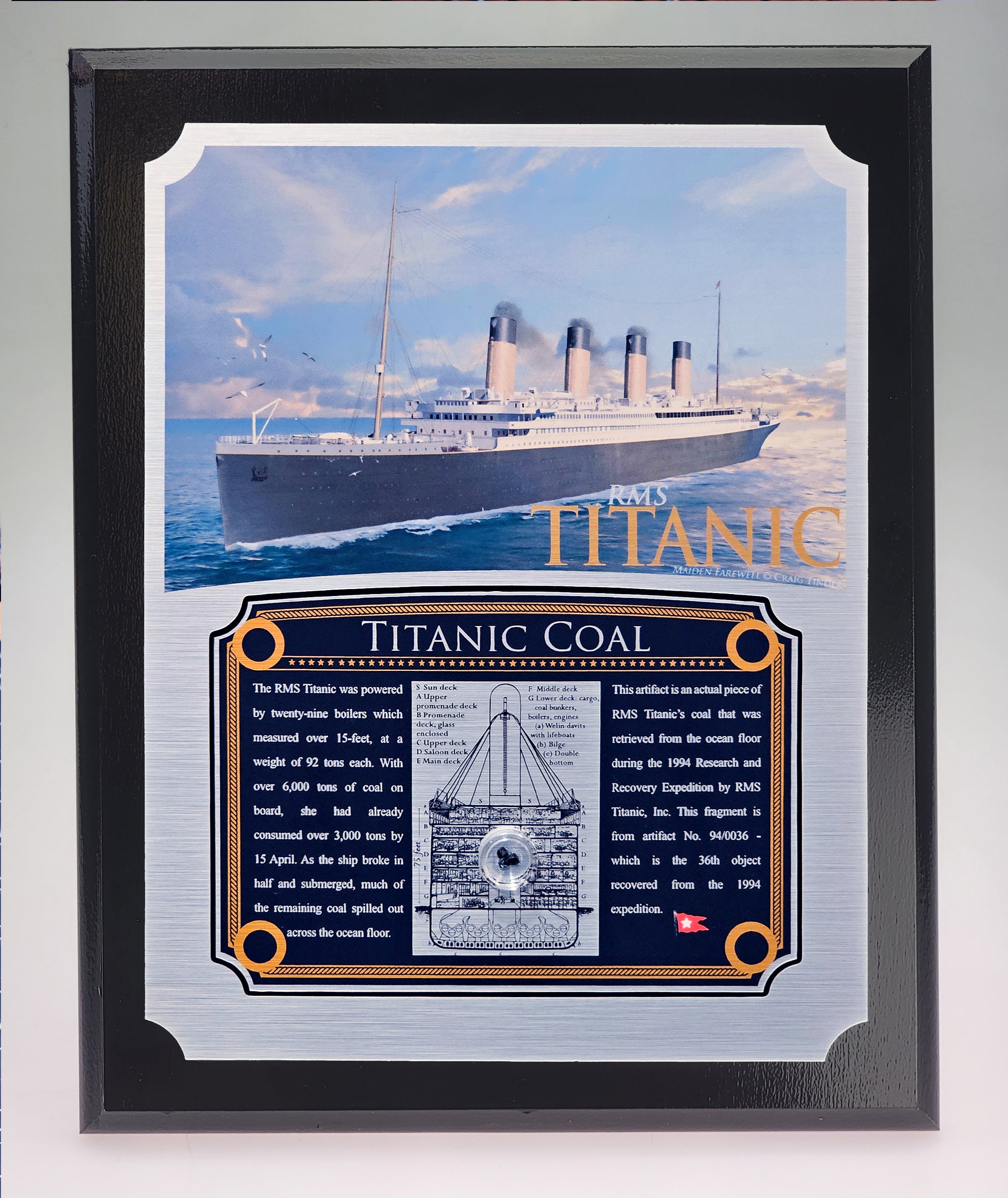
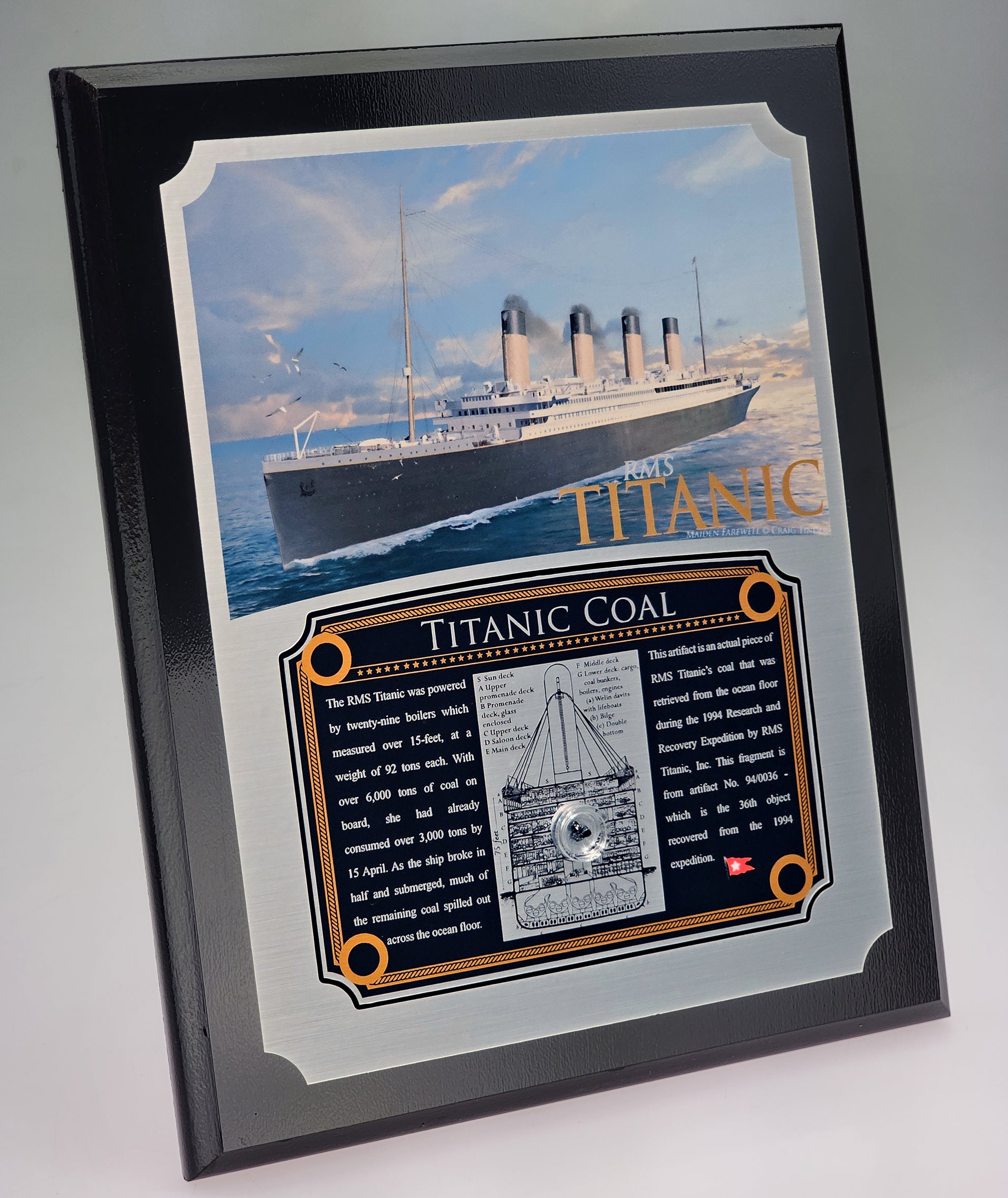
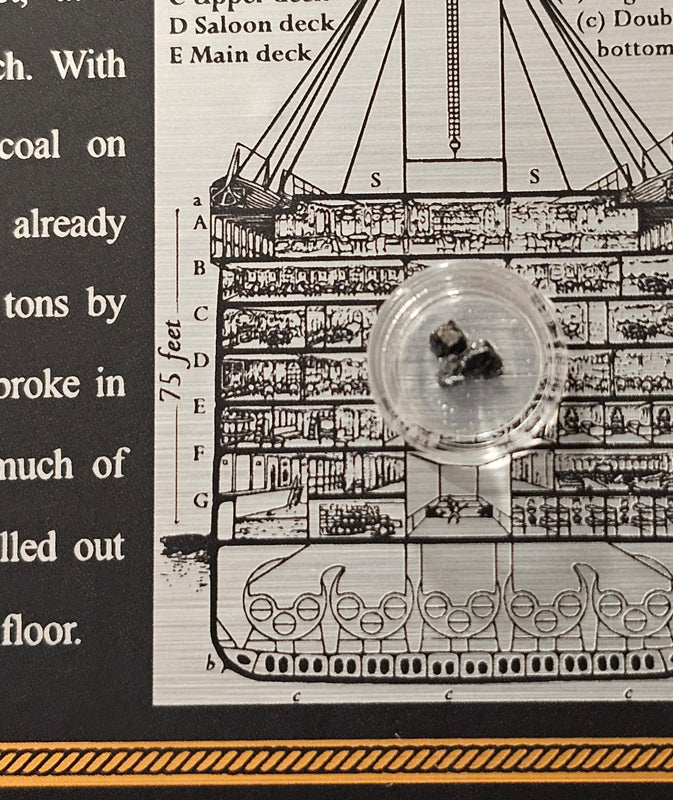
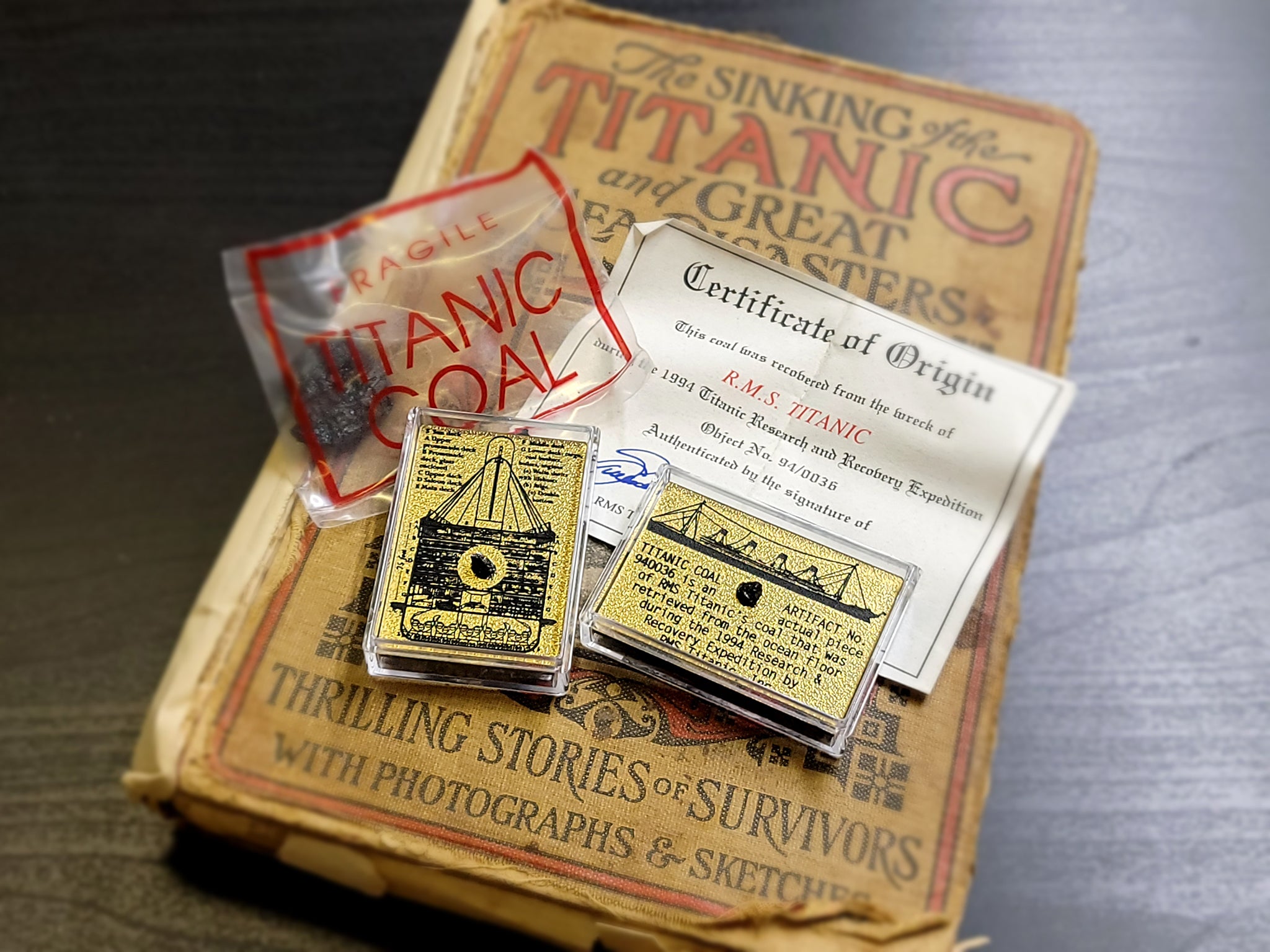
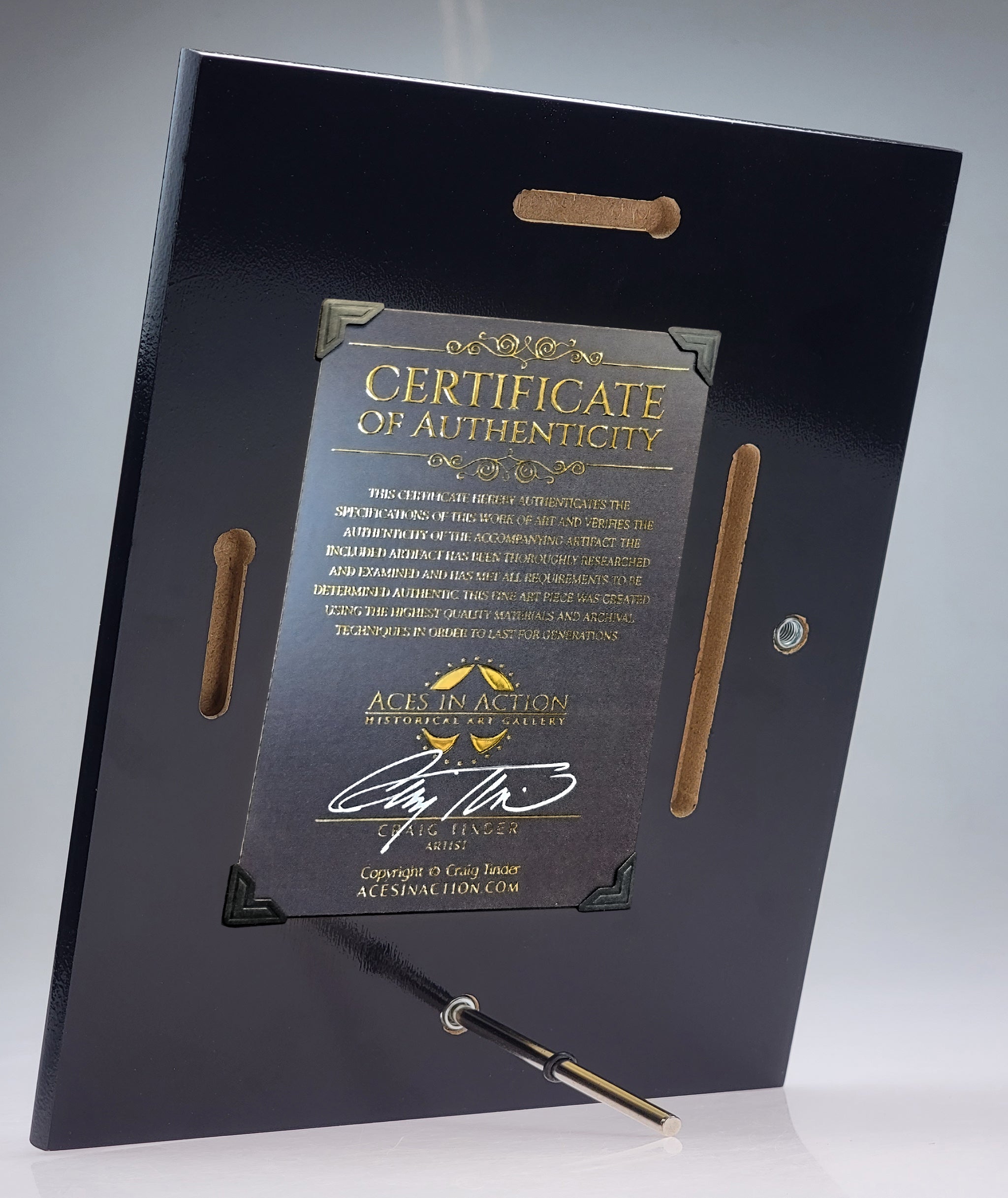
Titanic - Relic Plaque - 8"x10"
Pairs well with

Titanic - Relic Plaque - 8"x10"
If you have any questions, you are always welcome to contact us. We'll get back to you as soon as possible, within 24 hours on weekdays.
Shipping Information
Use this text to answer questions in as much detail as possible for your customers.
Customer Support
Use this text to answer questions in as much detail as possible for your customers.
FAQ’s
Use this text to answer questions in as much detail as possible for your customers.
Contact Us
Use this text to answer questions in as much detail as possible for your customers.
Description
Known Relic History
The coal included in this historical plaque was recovered from the debris field of the RMS Titanic during the 1994 Research and Recovery Expedition led by RMS Titanic, Inc. Resting at a depth of over 12,000 feet in the North Atlantic, the wreck had remained largely undisturbed since the ship’s sinking in 1912. During the expedition, advanced remotely operated vehicles carefully collected select artifacts, including this coal fragment—cataloged as Artifact No. 94/0036, the 36th item recovered. Coal was one of the few materials robust enough to survive the intense pressure and time beneath the ocean, offering a rare and tangible link to the vessel’s original structure and voyage.
 Fragments from the coal recovered in the 1994 expedition
Fragments from the coal recovered in the 1994 expedition
Coal played a vital role in the Titanic’s short but storied journey. The ship relied on over 6,000 tons of coal to feed its 29 boilers, which powered the engines and generated electricity throughout the vessel. As the ship broke apart and disappeared beneath the waves, thousands of tons of coal spilled from her bunkers and scattered across the ocean floor. These fragments, preserved for over eight decades in the cold and dark of the deep sea, now serve as some of the most recognizable and historically significant relics from the ship. Each piece included in the plaque is a genuine part of Titanic’s story—silent testimony to the lives, ambition, and tragedy tied to one of the most famous ships in history.

Disclaimer
By purchasing from Aces In Action, you acknowledge that the product may vary slightly from the images on our website. We use authentic materials from military vehicles and relics, which may contain potentially hazardous substances. These items are not intended for ingestion, inhalation, or use by children. Aces In Action is an independent company, unaffiliated with or endorsed by any other organization. All names, logos, and trademarks are the property of their respective owners and are used for identification only, in accordance with the Lanham Act. Their use does not imply any official endorsement.
